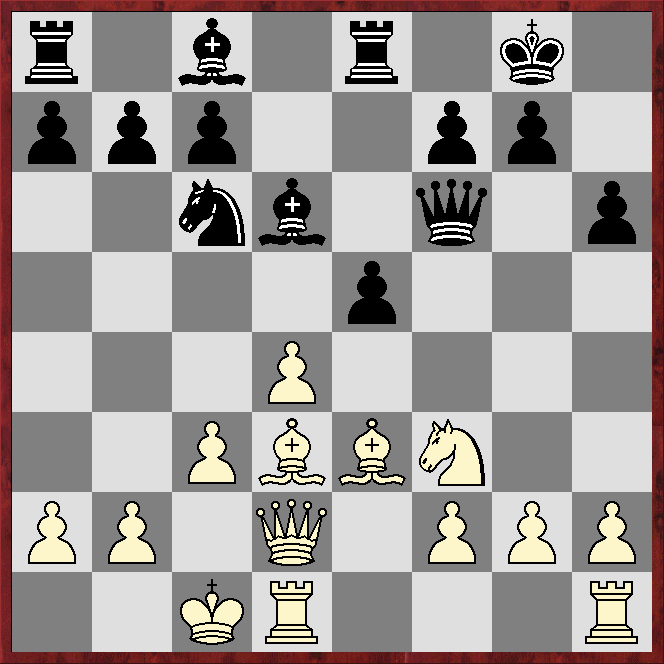The full game can be seen at B9 but here I want to concentrate on the opening.
The game began 1.e4 e6 2.d4 d5 3.Nc3 dxe4 4.Nxe4 Nf6!?, a sequence dating back to at least 1861, although Akiba Rubinstein, after whom the 3...dxe4 variation is named, preferred 4...Nd7, which is easily the commonest continuation in ChessBase's 2022 Mega database.
After 5.Nxf6+ Qxf6 6.Nf3 the threat of 7.Bg5 is unpleasant, so Black usually plays 6...h6.
*****
*****
*****
*****
7.Be3!?
7.Be3!?
Normal is 7.Bd3 but the text has also been played by grandmasters.
7...Bd6 8.Qd2 0-0 9.Bd3 Nc6 10.c3 Re8
Possible already is ...e5, which if it can be played without compromising the black position usually means Black has at least equalised.
11.0-0-0 e5
*****
*****
*****
*****
The game saw 12.Qc2?! exd4 13.Nxd4, after which 13...Ne5 gives Black at least a slight edge, according to Stockfish15 and Komodo13.02.
Instead 12.dxe5 Nxe5 13.Nxe5 Bxe5 14.Qc2 is equal, according to Komodo13.02 although Stockfish15 slightly prefers Black.
If 12.d5!? the engines give 12...e4 13.dxc6 exd3 as better for Black, eg 14.Rhe1 Qg6 15.Qxd3 Bf5 16.Qd2 Be4 17.cxb7 Bxb7, when Black is a pawn down but has the bishop-pair and the safer king.
CONCLUSION: if White lets Black play ...e5 in the Rubinstein Variation of the French Defence, without having a strong riposte in mind, Black has a good game.


No comments:
Post a Comment